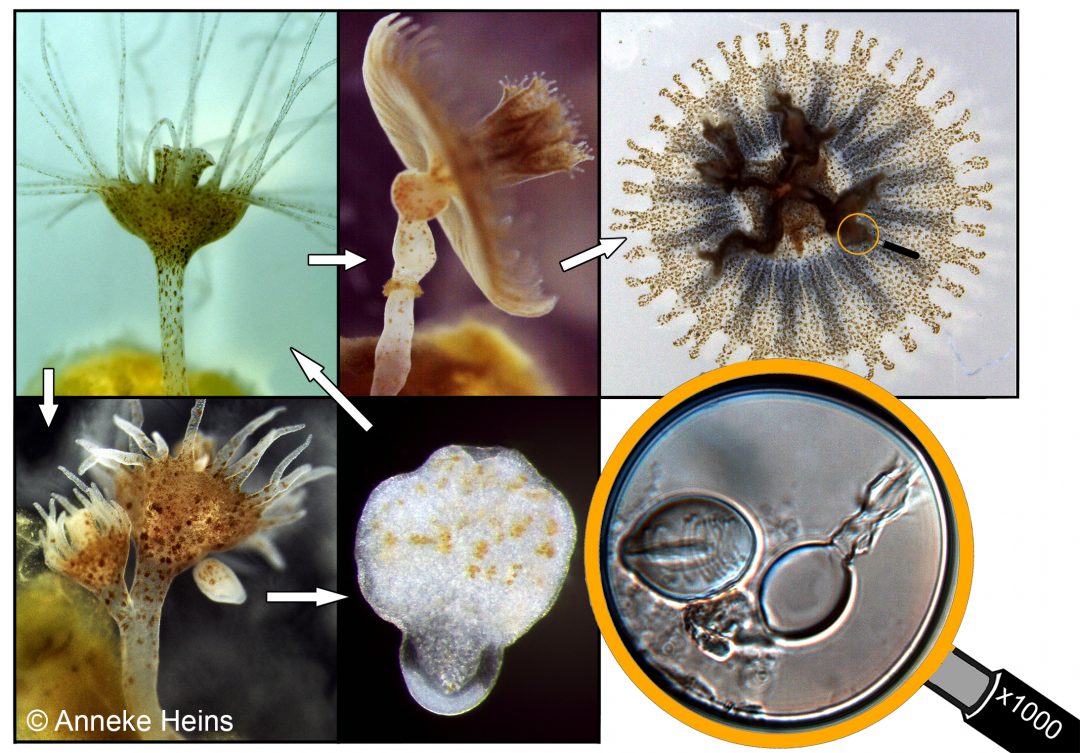Sting capsules (Cnidocysts)
All cnidarian species have sting capsules (cnidocysts). The name of the taxon Cnidaria is derived from this common character of all cnidarian species. In many cnidarian taxa the different cnidocyst types are an important taxonomic character used to identify and differentiate the species.
Cnidocysts have various functions. They are used for prey capture, defense or to attach to the ground. Each cnidocyst is a formation of a single cell which is eliminated and replaced by a new sting cell after use. During the explosion-like discharge of the cnidocyst a long tubule is released from the capsule. Various capsule types can be distinguished by differences in the tubule shape (Sötje & Holst 2020). The contact of jellyfish sting capsules with the human skin can cause painful irritations (Hoffmann et al. 2017).
Live-observation on the inconspicuous polyp generation of the upside-down jellyfish Cassiopea andromeda highlight their fascinating asexual reproduction strategies resulting in the offspring of either young polyps or tiny medusae (ephyrae). The examination of fresh tissues under 1000fold magnification provided new insights in variation range of the cnidocysts of the species. Focusing on the tubule shape of discharged sting capsules revealed a higher diversity of cnidocyst types than described in previous studies. Differences in abundance and size of cnidocyst types between five examined developmental stages indicates an adaptation to changing prey item preferences (Heins et al. 2015).
